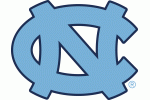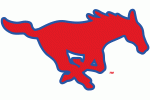This article is for those who don't see the difference between a touchdown and a try.
We've compared the rules and nuances of the games to help you understand the differences between rugby and American football.
Every American football fan has found themselves in this classic dialogue at least once.
He tells his friend about his favorite sport, and gets asked, “Is that like rugby?” And that's when people split into two groups. Some launch into passionate explanations that they're completely different sports, and that the dynamics of the game are fundamentally different. The other person doesn't understand and nods, but then goes on to say that they have a friend who plays rugby.
The second type give up: they just nod, say “yes,” and don't waste another second on explanations. In this article, we have tried to help not only those interested in sports, but also all of our readers, because confusing rugby and American football is considered bad form. Yes, these games mainly involve the use of hands. But so do handball and basketball, and no one confuses those sports.
For anyone who plays soccer (or rugby), the difference between the sports is obvious. For anyone who watches regularly, the difference is also obvious. For the average person who thinks that Ovechkin is a staff captain from The Avengers, there is no difference.
Let's go over the key points. Walter Camp was not the first to consider changes to the rules of classic rugby — as early as the late 1860s, American college students approached this task, but all the key ideas were formulated and finalized thanks to him.
Here you can enjoy some exciting gambling - betwhale.ag/sportsbook/sports/tennis?sportEventStatusSlug=prematch
As a result, Camp came to be known as the father of American football during his lifetime.
The ball
When an ordinary person sees balls of roughly the same shape, in our case the shape of a melon, they intuitively categorize them as rugby balls. But not all melons are the same. Anyone who has ever been to a market knows this.
A rugby ball has a more rounded shape, with a flattened base and top. This ball flies better when kicked, bounces less wildly off the grass, and lower. Due to its size, this ball is easier to catch. It is also slightly easier to direct it between the posts and spin it slightly, so players can kick it at even the sharpest angles in rugby.
An American football is designed to cut through the air. It fits easily into the passer's hand, providing a secure grip at the moment of release. The aerodynamic properties of this ball help it travel further after being thrown by hand.
The quarterback, the main passer in American football, is capable of throwing a pass 40-60 yards (36-55 meters) with precision, advancing the team's offense as close as possible to the end zone. And even if the attacking team is in the middle of the field, the opponent is always on alert, because even from such a position it is possible to score points.
Camp removed the classic rugby scrum, replacing it with a line of scrimmage; he invented the down system, introduced the snap from the center, and effectively invented the position of quarterback, a key figure in the game. He also developed a new scoring system.
Walter Camp was not the first to consider changes to the rules of classic rugby — as early as the late 1860s, American college students had approached this task, but it was thanks to him that all the key ideas were formalized and finalized. As a result, Camp came to be known as the father of American football during his lifetime.
Field
In American football, the field is always the same size. The playing area is 100 yards (91.44 meters) long from one end zone to the other. The field is 53.3 yards (49 meters) wide. At each end of the field is an end zone 10 yards (9.1 meters) long. Thus, the entire American football field is 120 yards (almost 111 meters) long.
The dimensions of a rugby field vary. As a rule, it is 94–100 meters long and no more than 70 meters wide. The length of the end zones also varies, from 10 to 22 meters.
Game logic
In American football, 11 players play against 11. In rugby, 15 players play against 15. In American football, the entire game is divided into segments. The attacking team lines up on the line of scrimmage. The defending team cannot cross this line before the start of the play.
As soon as the ball is passed to the quarterback, the offensive players begin to move. The receivers, whose job is to catch the ball, run along a specific route. The offensive linemen, whose job is to block, create obstacles for the defenders to prevent them from reaching the quarterback and interfering with his pass. If the offensive players are successful, the quarterback throws the ball forward with his hand, and the receiver must catch the pass and gain yards to advance the offense.
The quarterback can also hand the ball to a running back (a running player on the offensive team) so that he can break through the defenders and gain yards with his feet. The quarterback can also move forward himself and gain yards. However, this is a rather dangerous move, considering that the main task of the defenders is to destroy, incinerate, and tear apart the attacker, just to prevent him from advancing with the ball toward the end zone. If the ball does not reach the receiver and touches the ground, the play is stopped. The offense gets a second attempt.



















